Main Menu
Time on Feet Training

E. Lisa Hoekstra is a Registered Nurse, working for the State of New Hampshire protecting the rights and needs of people with disabilities. She is a freelance writer and author, writing about marriage, health, faith, and trail running. Though she rarely wins any trail races, she keeps toeing the start line anyway. Her dream is to see master’s level runners be recognized for FKT’s on established long-distance trails.
Share This Article!

The only fresh air I inhaled for 72 hours was the puff of New Hampshire February chill when I opened and closed the slider on my sunroom to let my dogs in or out, followed by wheezing my way back to the couch. I’d been sick for over a week, getting worse. I could feel my hard-won fitness melting away like butter in a hot frying pan.
Part of the trouble with being a Master’s level runner (I’m 56) is how quickly we lose muscle strength from immobility related to injury or sickness. My 81-year-old mother, though supportive of my trail running devotion, reminds me, “old bones heal slow.” It has felt to me that it takes twice as long to re-gain what I lose in fitness from injury or illness, then it did when I was in my 30s.
This particular respiratory illness came right in the middle of my well-planned training schedule for my longest-yet trail run race, scheduled for Mother’s Day weekend. It’s called the “Wapack and Back” with three different lengths to choose from: 21.5 miles – one way on the trail, 43 – out and back, or 50 – out and back, plus seven more. The trail sits in southern New Hampshire, traveling over several knobby wanna-be mountains into the baby foothills of the White Mountains. I had tried for three years to sign up for the race, but because the number of entrants is limited to minimize traffic on the trail, I kept finding myself on the waitlist. This year’s sign-up opened at midnight on February 1st. I napped on the couch, willing myself to wake up at midnight. Instead, I woke up at 1:20AM, logged in and… all the slots for the 21.5 were already filled. So were the slots for the 50s. That left the 43-mile route. I felt confident I had training time to be ready for 21.5. And, I knew just as well, that I could NOT complete 43. I took a deep breath, posted all my info anyway, paid the higher entry fee, and signed up for the 43 miles. The next day I emailed the organizer and pled my case… that I was a Mater’s level runner, that I’d been trying for 3 years to get into this race, and please, please, please can I switch to the 21.5? He said yes. I was in!
Last summer I ran two 15-mile trail races and still had change in the bank at the end. I was following a similar training plan for this year, adding longer road miles with hills. I was running three days a week, and rowing on an erg along with weight lifting three days a week. Right before I got sick, I had an eight mile road run, and 16 miles total for the week. I felt on track.
But that respiratory illness set me back. Way back. How would I re-gain what I had lost? I felt panicked that my opportunity to compete in the 21.5-mile Wapack and Back would elude me for another year.
Then I remembered something I had read when consuming large quantities of trail running literature as a newbie to the community. Miles and speed and core strength are all important when training for longer races, but also important is how long a runner can stay on her feet. In essence, it matters less that I can road run 10 miles in 100 minutes (and even that is optimistic for me…). One hundred-minutes-and-done doesn’t fully prepare me for six hours of trail running and power hiking. What matters more is stamina: “Time on Feet.” I need to be upright, body balanced, mind engaged, and moving forward for hours.
This information came back to me as such a relief! Because of that respiratory illness I had missed two weeks of running. I had missed nine mile and 10-mile long-run weeks. I needed to modify my training program to make up lost time. Maybe I could resume my training with a more concentrated effort on “Time on Feet,” (TOF) instead of just accumulating running miles?
Yes, I still have to keep an ear on my pace, listening for my tempo, to meet cut off times. But for me, a solid back-of- the-packer, who wants to run the race, enjoy it, duck under the finish banner free of injury, who isn’t out to win (well, maybe place in my Masters’ age-group? Can’t deny my competitiveness here…), “time on feet” has become my enhanced training module.
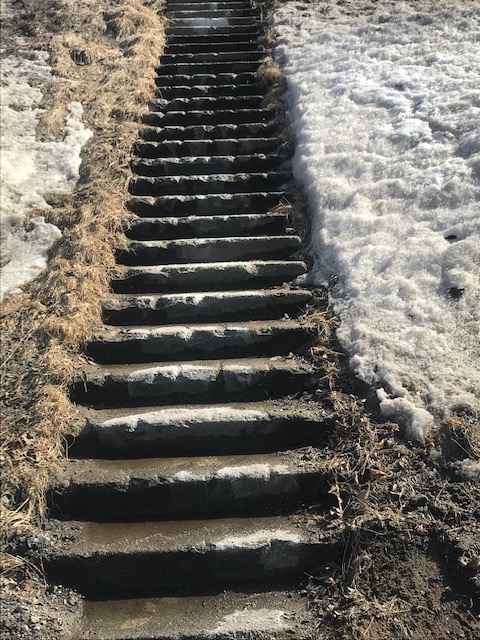
This feels a bit familiar to me since until four years ago I worked 12-hour overnight shifts as a nurse on a busy acute care unit. I trained my mind and body to stay alert and engaged, as I had to be on the move for hours at a time. Following my illness this winter I reminded myself, I can do this. I know how to DO this!
I am accumulating “Time on Feet” by mindfully staying active for several hours at a time. A month after my respiratory illness, I buckled on my running pack and briskly walked six miles, keeping the same tempo up and down hills, then I walked to the library, post office, and general store, adding items and weight to my bag at each stop. When I got home, I didn’t sit; instead I trotted up and down the stairs with laundry, then cooked and cleaned in the kitchen, bending and reaching and lifting. I deliberately kept going. My training journal from that day reads: TOF 3.5 hours.
Trail running moms naturally have built-in TOF: the little ones and even school-age children keep you moving! I have one husband, two dogs, one house and sedentary work. I am now consciously building one day a week into my training schedule of a 12ish mile run with hills power-hike, followed by three to four hours of on-my-feet planned active time: cleaning, laundry, shoveling snow, jogging the dogs, backpacking to errands. I don’t sit at all, but take fluids and snacks as I keep moving, mimicking being on a long trail run. As the cough from my respiratory illness faded to a hiccup, so did the panic about not being ready for my 21.5 mile trail race. I still have six weeks of training to increase my TOF and agility on the trail, but I also feel more confident that I’ll have the stamina to keep going. And keep going.
About the Author

E. Lisa Hoekstra is a Registered Nurse, working for the State of New Hampshire protecting the rights and needs of people with disabilities. She is a freelance writer and author, writing about marriage, health, faith, and trail running. Though she rarely wins any trail races, she keeps toeing the start line anyway. Her dream is to see master’s level runners be recognized for FKT’s on established long-distance trails.
Share This Article!


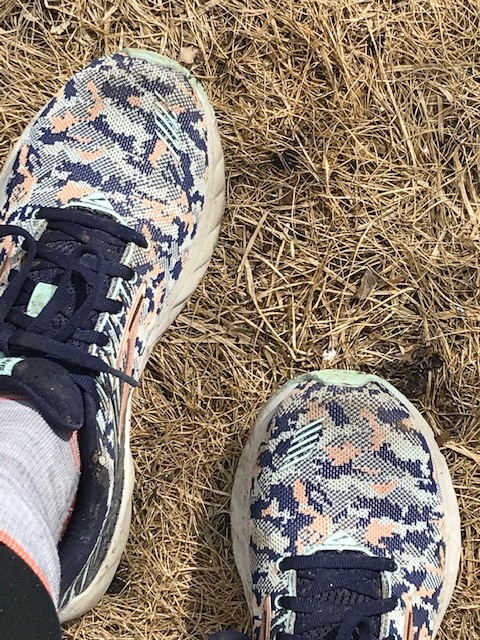
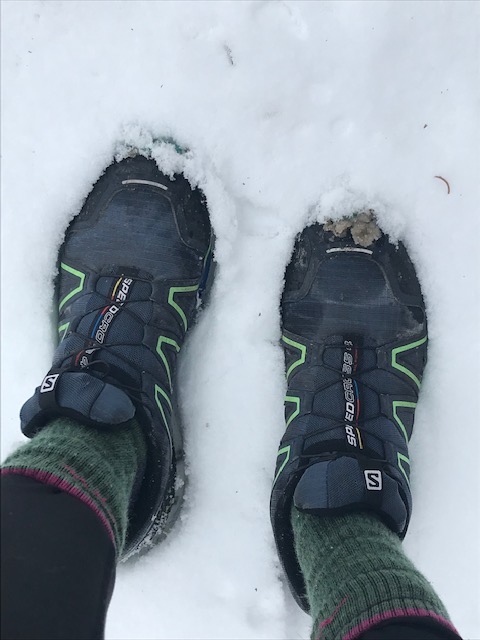
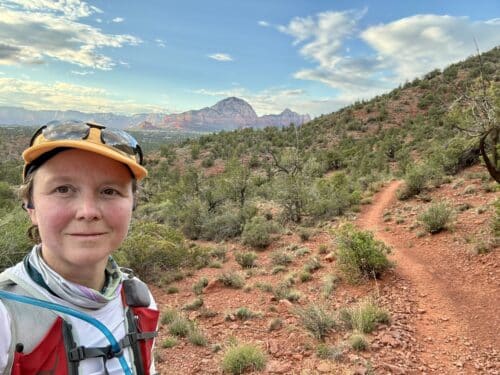
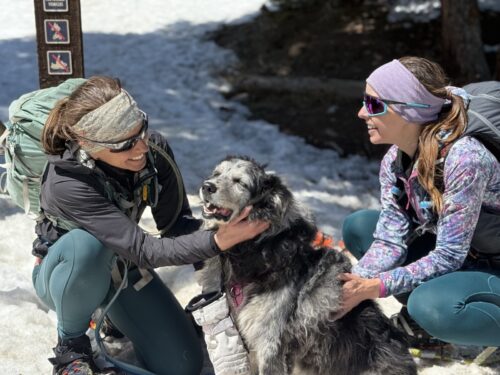









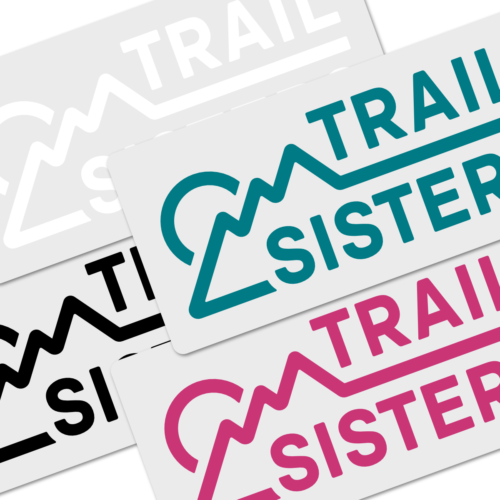

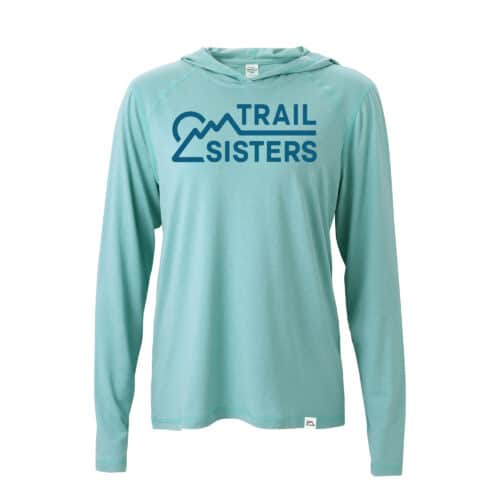
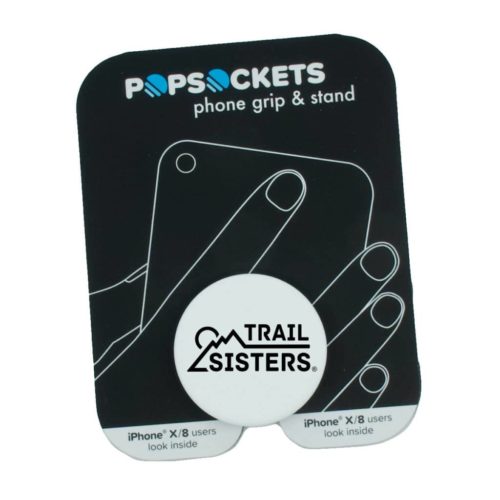
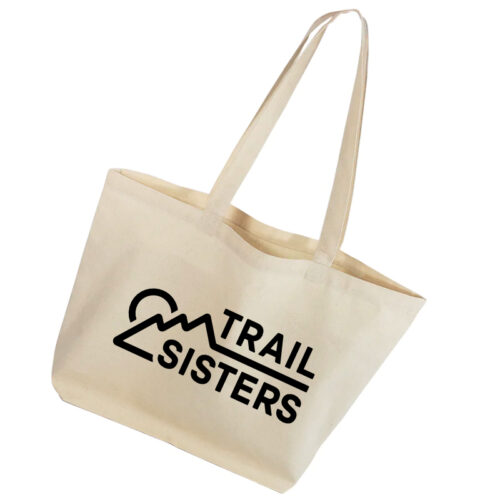
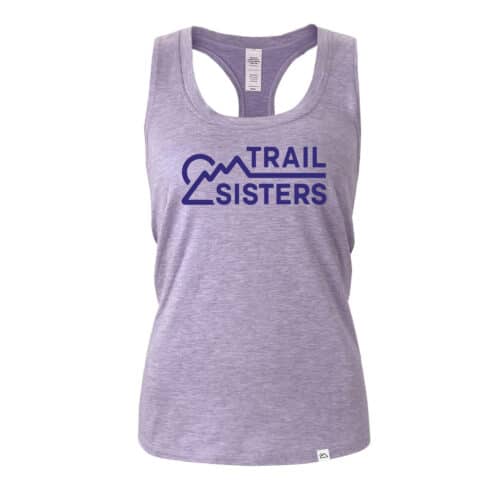

5 Responses
I appreciated this article!
Great read. So often we focus more on what we cannot do instead of what we can do! Thanks for posting!
Brilliant! Time on feet is such a basic concept for ultra training but I had never thought about incorporating it into daily life. We tend to think of training only as it exists in a training run but now I see how I can “train” through out the day. Thank you.
Thank you for this great article! Good luck! You’ve got this!
Cool article! I really enjoyed this. As a masters runner myself, I have discovered the joy of long walks to supplement run training, sometimes with weight sometimes without. I’m doing speed work right now and trading some of my easy runs for walks in hopes of avoiding injury from too much training stress…it’s working well! 🙂
Good luck!